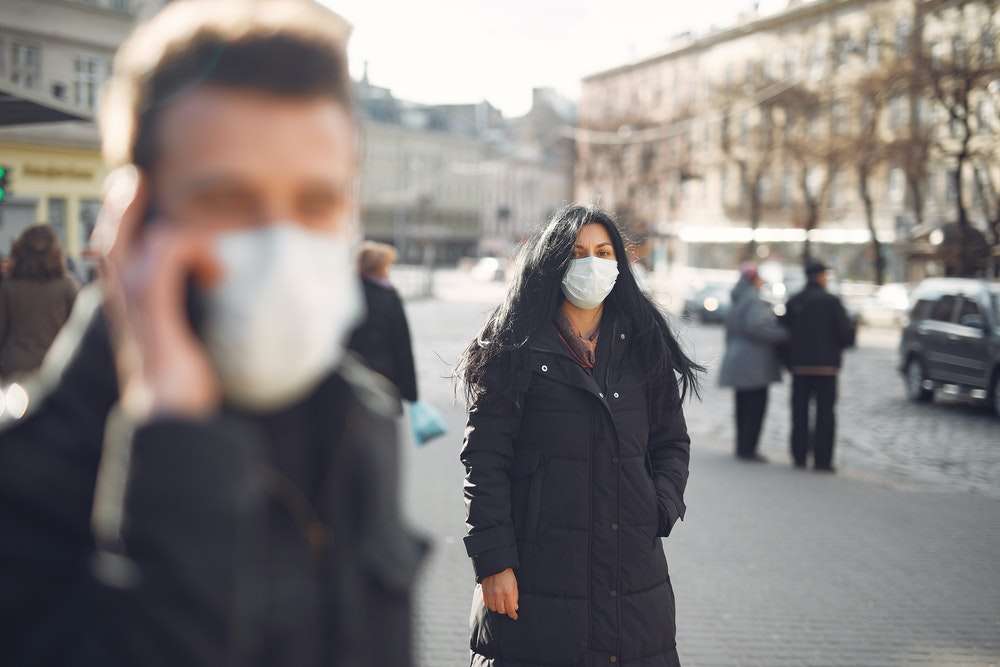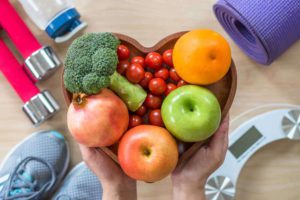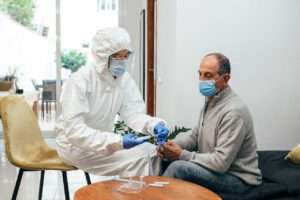How can you prevent Coronavirus transmission?
With the Coronavirus disease 2019 (COVID-19) plaguing the United States, strict health protocols are implemented to ensure public safety. This meant temporarily closing establishments and businesses, prohibiting mass gatherings, and imposing mandatory self-isolation and quarantine procedures.
The coronavirus pandemic has rendered nearly everyone to continue their work or studies at the safety of their homes. Frontliners or essential workers in the healthcare, transportation, food, and security industries are risking their lives to serve the people. To slow the spread of the virus, one must consistently follow the safety precautions recommended by experts.
What are the COVID-19 symptoms?
The World Health Organization (WHO) has provided a list of coronavirus symptoms. This aims to help people check for COVID-19 signs and if there is a need to seek urgent medical attention.
Not everyone who catches the virus succumbs to death. Some are even able to recover by just staying at home. An isolation period of at least two weeks must be observed to guarantee that you are completely safe from the virus. If the condition worsens or if the infected has preexisting health conditions, call a healthcare provider immediately.
How is COVID-19 transmitted?
There are three modes of COVID-19 transmission:
- through respiratory transmission from person to person; when an infected person coughs, sneezes, or expels saliva;
- through aerosol or airborne transmission when virus particles remain suspended in air;
- through contact transmission when an individual touches a contaminated surface, like maybe a food package, then touches his or her eyes, mouth, or nose.
Symptomatic transmission occurs when a person is in contact with the respiratory droplets of another coronavirus patient.
The pre-symptomatic transmission also happens when a person contracts the virus from another infected person. But this time, the person afflicted with the virus is unaware that he/she is sick. One can be infected with the virus and oftentimes, the symptoms will only appear after one to three days.
Coronavirus transmission is possible even before the symptoms begin to manifest on the one who has it. Those with mild symptoms or none at all are also capable of transmitting the virus to others. This is called asymptomatic transmission. However, there is not enough research about asymptomatic transmission and experts continue to debate over the severity of its consequences.
Because of the possibilities of asymptomatic and pre-symptomatic transmission, authorities and medical experts are promoting home isolation and quarantine guidelines. It is best to follow the recommended guidelines for the sake of public health and safety.
What are the 3C’s of COVID-19?
We already know that there are three modes of COVID-19 transmission. We also have to consider the three situations (or 3 C’s) that could increase the risk for coronavirus spread. The 3C’s of COVID-19 are closed spaces with poor ventilation, crowded places, and close-contact settings.
Use the COVID-19 3C’s in a Yes/No question format to evaluate your risk in a particular environment. The more frequently you answer YES, the higher the risk of coronavirus transmission.
- Is it a closed space with poor ventilation?
- Is it a crowded place?
- Is a close-contact setting a possibility?
What is the recovery time for COVID-19 patients?
One frequently asked question is “What happens if one does catch the coronavirus?” The outcome is highly dependent on the severity of the patient’s condition and the response level of the immune system. Some COVID-19 survivors develop organ dysfunction and up to a third of them have lingering mental health issues.
Those with mild COVID-19 symptoms can return to their usual – but still quarantined – lifestyle. They can recover anywhere between a week to ten days. The recovery process is similar to respiratory viral infections such as the flu.
Those with moderate COVID-19 symptoms recover at a slower pace than those with milder symptoms. One might experience prolonged bouts of fatigue, breathing difficulties, and cough before the body fully recovers, which may take several weeks.
People with severe COVID-19 symptoms suffer the most and are likely to be hospitalized and placed under intensive care. A ventilator may be needed as the symptoms may aggravate the lungs and cause additional respiratory ailments, such as Pneumonia. The COVID-19 virus is also capable of making the human body’s own immune system work against itself. To combat the virus, the immune system unleashes a “cytokine storm”.
The cytokine storm, instead of fighting the COVID-19 virus, will start to fight the body’s own cells and tissues. Because it is a powerful inflammatory response, it may cause lung tissue damage, respiratory failure, and even death.
How does hospital solitary confinement prevent the spread of COVID-19 infection?
WHO urges all patients with moderate to severe COVID-19 symptoms to be admitted for hospital solitary confinement. However, healthcare facilities all over the world are already overwhelmed with the large number of confirmed cases being handled.
Health professionals prioritize the elderly and those with underlying health issues as they are more vulnerable to the disease. Those with mild symptoms could opt to self-isolate at home. As long as the caregivers at home practice self-isolation and social distance protocols, everything will most likely go on smoothly.
How do home quarantine measures prevent the spread of COVID-19 infection?
Lockdowns, temporary closing of businesses and establishments, and a ban on mass social gatherings have become the norm. They are the perfect visual metaphors for the COVID-19 pandemic. The virus itself may not be seen with the naked eye but the ramifications it brings are extremely life-threatening. Not only is it detrimental to one’s health, but it has also caused countless major inconveniences in everybody’s lives.
The coronavirus disease is acquired when a person gets in contact with the respiratory droplets of an infected individual. Also, one can catch the virus by touching a surface contaminated by the virus. One can harbor the virus but still only experience mild symptoms. This is why the importance of home quarantine measures is always emphasized by experts.
There is, however, a big difference between isolation and quarantine. Coronavirus isolation is practiced if an individual is exposed to the COVID19 virus or is already sick. This prevents the infected from transmitting the virus to other people.
On the other hand, individuals who are not infected practice coronavirus self-quarantine. These people are protecting themselves from contracting COVID-19 by staying in their homes and limiting their contact with other people.
How does handwashing prevent the spread of COVID-19 infection?
Constant hand washing is one foolproof way to avoid getting infected with the coronavirus or being an unknowing perpetrator of its spread. Even before this pandemic, handwashing has proved itself an effective method of preventing oneself from catching diseases. In fact, one prevents the onset of multiple diseases if you wash your hands often with soap in between activities.
Because of the COVID-19 pandemic, citizens are required to wash their hands with soap and water frequently. It might seem like an overreaction but the COVID-19 virus can contaminate surfaces and stay alive on them for some time. Proper handwashing technique involves using soap and water for at least 20 seconds. If unavailable, using hand sanitizers that are made of at least 60% alcohol will suffice to disinfect and kill the virus.
How do face masks prevent the spread of COVID-19 infection?
Face masks have become an everyday essential item in nearly everyone’s life. Gone are the carefree days of leaving the house with just your phone, keys, and wallet. One of the mandatory guidelines included in the usage of face masks is to wear N95 respirators or higher. But due to shortage and price surges, experts say that even homemade cloth masks are substantially better than nothing.
While wearing face masks or covers may seem uncomfortable, people should not choose not to wear them. Its usage is significant during this pandemic to prevent COVID-19 spread.
Dr. Richard Davis, the Clinical Microbiology Lab Director at Providence Sacred Heart Medical Center, effectively demonstrated the importance of face masks. He posted the results on Twitter where it quickly caught the attention of hundreds of thousands of Twitter users.
Research finds that a single cough can produce up to 3,000 droplets. One cannot imagine the repercussions a single unmasked person can cause.
How does physical distancing prevent the spread of COVID-19 infection?
Experts advise the public to maintain a distance of at least 6 feet from other people to prevent transmission. Along with the other ways to prevent the transmission of the virus, physical distancing can help flatten the curve. One can never know if the person next to you is a carrier of the virus.
Experts have found that transmission could still occur even if the host is experiencing zero to mild symptoms only. To prevent getting infected or infecting others, treat other people as if they are potential carriers of the virus.
How do PPEs prevent the spread of COVID-19 infection?
Personal Protective Equipment (PPE) is meant to protect medical front liners from infectious risks present in the workplace. The usage has now transcended beyond toxic work settings in hazardous industries because of the COVID19 pandemic.
The PPE used by medical workers includes isolation gowns, non-sterile gloves, face shields or goggles, and N95 masks or respirators. However, there is a shortage of PPEs worldwide because of hoarding, panic-buying, rising demands, and misuse. Without the appropriate PPE, healthcare workers are subject to the life-threatening dangers of COVID19.
Instructions on how to properly utilize and discard PPEs can be found on the Centers for Disease Control and Prevention website. Furthermore, guidelines on how to optimize the supply of PPEs have also been released as supplies are still limited.
How can I help prevent the spread of COVID-19 infection?
You can find out if you have been exposed recently to a Sars-CoV-2 infection that causes COVID-19. Statcare is listed on New York City’s website as a leading testing site and has performed over 7,000 COVID-19 Nasal Swab Test and COVID-19 Antibody Blood Test.
Statcare’s mobile staff have been doing on-site testing for large employers, nursing homes, Utility, and Telephone Companies. All test results are discussed by online doctors over a Televisit. This virtual doctor visit can be conveniently done from your home or office. Online prescriptions can be sent to a pharmacy near you.
You can help prevent the spread of COVID-19 infection by scheduling a telehealth visit with our online doctor today.










